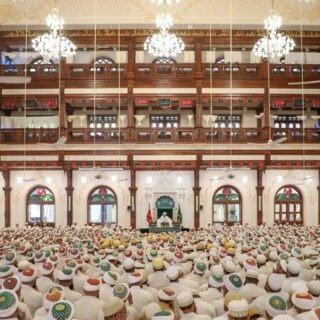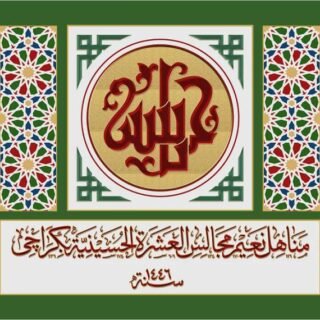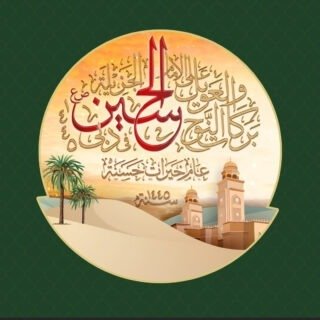“Allah is exquisite, he likes the exquisite” says the Quran. Dress etiquette in Islam is based on this maxim. Amir ul mumineenAS explains that a man’s attire should reflect his wealth. Nabi Yusuf wore a dress of velvet embroidered in gold when he presided over court. When Imam HusainAS was martyred in Kerbala, he was wearing a silk robe.
Allah has not prohibited ornamentation. Imam Jaffer us SadiqAS instructs: Wear clothes of cotton, they were Rasulullah’sSA clothes, as they are ours. RasulullahSA did not wear wool or fur; don’t wear these except in times of necessity. Further, RasulullahSA preferred white clothes to other colors.
During winter, Imam Mohammed ul BaqirAS donned silken robes which were valued at a thousand dirhams. A year later, he gave them away as sadaqa. Someone asked: Why don’t you sell off the clothes and give alms from the amount you get? The ImamAS replied: I prefer not to sell the clothes I have prayed in.
Cloth woven from plant fibres is halal to wear. Similarly the fur of halal animals that have been sacrificed (zabihat) can be worn.
Women should not pray without gold or silver ornaments on their hands as they should not pray without henna on their hands. Women should refrain from thudding their feet as they walk so as not to attract attention to themselves.
When RasulullahSA saw a metal ring on a man’s finger he exclaimed: This is an ornament of the people of hell. The man threw away the metal ring and wore one of gold. RasulullahSA said: As longer as you wear that your finger is in hell-fire. The man asked: Should I not wear any kind of ring? RasulullahSA replied: You should wear a ring of silver. It has also been said that a ruby ring is maimoon and mubarak.
A chapter is devoted to oils and fragrances. RasulullahSA said: Attar enhances the mind. While Imam Jafer us SadiqAS reiterated: The ornament of a man is scent manifest and color hidden, while that of a woman is color manifest and scent hidden. A man must apply attar on Friday, even if it means borrowing it from his wife.








